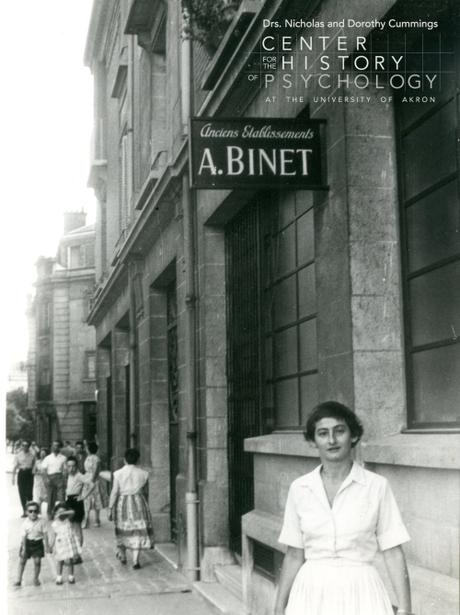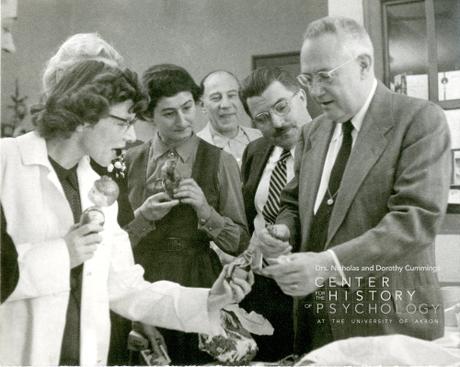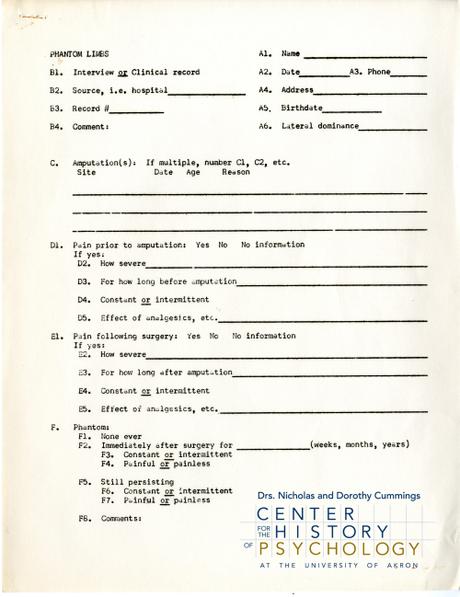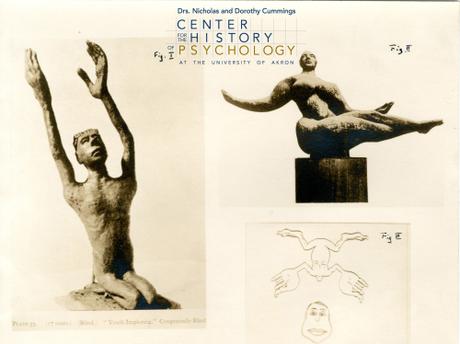contributed by Allan Christopher, Amanda Leach, Sarah Riddle, M. Rose Stull (students in the Museums & Archives Certificate Program).
The Marianne Simmel papers consist of the primary research, patient files, correspondence and publications of psychologist Dr. Marianne Simmel, as well as her work/research with the performers Marcel Marceau and Charlie Chaplin.

Picture of Dr. Marianne Simmel in Paris, Early 1950’s. Located in Box M6613, Folder 11.
The primary focus of her research was the phantom limb phenomenon, and she also dabbled in cognitive neuropsychology. Her work with phantom limbs focused on adults and children with neurological defects. Amputations were a large focus, and she also did work with mastectomy patients. She explored animacy and the human instinct for storytelling, which led to an extensive collection following the work of Charlie Chaplin and Marcel Marceau.

Dr. Simmel, pictured second from left, conducting research at the University of Illinois. Located in Box M6613, Folder 11.
Dr. Simmel’s work with phantom limbs included various tests meant to induce/test sensation where the missing body part once was, such as experiments with heat and cold.

Sample of test sheets Dr. Simmel gave to her patients. Located in Box M6613, Folder 7.
She corresponded with Dr. Jean Piaget, a renowned child psychologist of the time. Much of this correspondence is in French and, considering she was born in Germany, it is reasonable to assume she was trilingual.
Simmel also published several studies on the phantom limb phenomena, including the physical and psychological effects on patients of various circumstances and health conditions. One of the ways Simmel did this was by studying the human capacity for symbolic art form, particularly by working with performers Marcel Marceau and Charlie Chaplin. She would often go on tour with Marceau, giving lectures after his initial performance in order to make her point.

Playbill featuring Marcel Marceau. Located in Box M6630, Folder 3.
While going through her research files, we also found representations of the Homunculus, which shows the relative extent of symmetric motor and sensory representation in the cerebral cortex.

Blind Child (Fig. 1), An Example of Bad Art (Fig. II) and Homunculus (Fig. III).
To learn more about the contents of this collection, view the finding aid. You can view the collection in person at the Cummings Center for the History of Psychology, located in Akron, Ohio.
The processing of this archival collection fulfilled requirements for students enrolled in the course Foundations of Museums and Archives, I.
